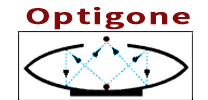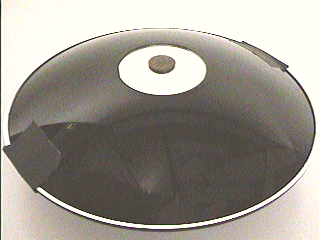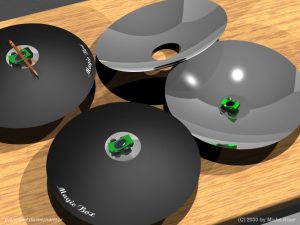Education & Science
Classrooms Come Alive with Compelling 3-D Optical Illusions
| “The first time I saw a Mirage® was in the supply room at Indiana State University. It became the first object in my collection of toys that demonstrate physical properties. I use the Mirage® primarily as a Gee-Whiz demonstration in optics lab, but I have found that it helps students to understand the difference between real and virtual images. An engineering professor who teaches a World Cultures class remarked that he would have liked to have had the Mirage® in his class. It would have been the perfect example of the fact that not everything is exactly what it appears to be.”– Lab Supervisor, Evansville, Indiana“I wanted to let you know that the activity using the Mirage® was a smashing success! So many students were completely amazed, and even those who had seen it before found at least one new thing that they had never encountered. Thanks so much for all your help in getting the Mirages to us on time for the activity!Our technical support staff and students were all so amazed by the Mirage that there has been a general clamor for us to get more. Thanks again for all your help.”– Krishna Chowdary, Evergreen College Mirage® is used in these disciplines:
For more information, investigate these fascinating links: |
Teaching Philosophy Ask the Chairman of Trinity’s Philosophy Department, Richard Lee, what philosophy is and he will respond that it is the “process of making the familiar strange – and the strange familiar.” Ask what he mans by that, and he will very likely smile, turn to his desk, and open a drawer. There, amidst the paper clips and manila folders, is a box containing a black, convex disk with what looks like a stainless steel tack on top. Rotating the disk so as to rotate the tack, he’ll then ask you what you see. If you say that you see a stainless steel tack rotating on a black, convex disk, he’ll ask you to pick up the tack, which may seem simple – until you try. As your fingers close around it, it dissolves just as surely as a handful of light. If that tack seemed to be there, it was only courtesy of several well-placed mirrors. And just as tacks aren’t always where we think, things aren’t always what they seem. TRINITY COLLEGE, Hartford, Connecticut
A MATRIX ANALYSIS of the “MIRAGE” OPTICAL-ILLUSION TOY Sriya Adhya, John Noe and Harold Metcalf, Sriya’s Analysis:  Newspaper report of young Bill Wright of West Virginia, USA who used a Mirage® 3-D Hologram Maker to win in Science Fair Fifth grader Bill Wright from Meadows Elementary School in Huntington, WV, won the school Social Studies Fair in the Psychology category with his project titled “You Won’t Believe Your Eyes” and advanced to the Cabell County Social Studies Fair. After winning at the county level, Bill advanced to the State Competition in Charleston, WV on April 22, 2005. To enhance his project for the tough competition at the state level, Bill added an Opti-Gone Mirage® to his project and built a model to demonstrate how the light reflection made the object rise above the surface. He also conducted an email interview with Michael Levin of Opti-Gone International about the Mirage® and added this interview and his findings to his abstract on optical illusions and how your eyes can deceive you. The competition was fierce, and Bill was called back for a second interview with one other project since there can be no ties at the state level. At the awards ceremony “You Can’t Believe Your Eyes” won Second Place for the State in the Psychology Category. |





